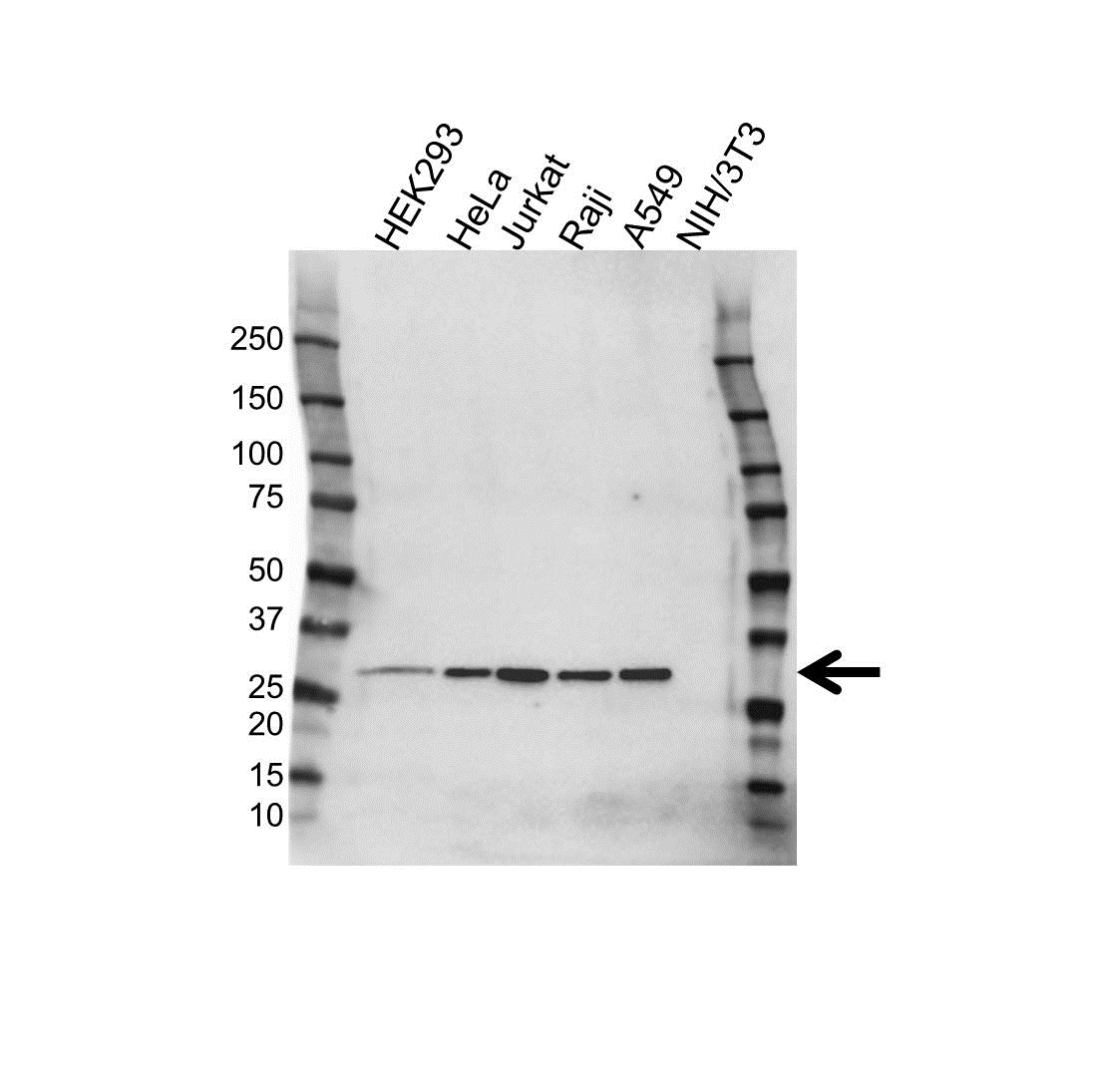CK1 antibody

Rabbit anti CK1
- Product Type
- PrecisionAb Polyclonal
- Isotype
- Polyclonal IgG
- Format
- Purified
- Specificity
- CK1
- Target Species
- Human
- Western Blotting
- Rabbit anti CK1 detects a band of approximately 34 kDa in Jurkat cell lysates.
- Product Form
- Purified IgG - liquid
- Preparation
- Rabbit polyclonal antibody purified by affinity chromatography.
- Buffer Solution
- Phosphate buffered saline.
- Preservative Stabilisers
- 0.09% Sodium Azide
2% Sucrose - Immunogen
- Synthetic peptide encompassing part of the C terminal region of human CK1
- Regulatory
- For research purposes only.
- Guarantee
- 12 months from date of despatch.
- Acknowledgements
- PrecisionAb is a trademark of Bio-Rad Laboratories.
| Application Name | Verified | Min Dilution | Max Dilution |
|---|---|---|---|
| Western Blotting | 1/1000 |
| Description | Product Code | Applications | Pack Size | List Price | Your Price | Quantity | |
|---|---|---|---|---|---|---|---|
| Goat anti Rabbit IgG (H/L):HRP | STAR208P | WB | 2 ml |
|
Log in | ||
| List Price | Your Price | ||||||
|
|
Log in | ||||||
| Description | Goat anti Rabbit IgG (H/L):HRP | ||||||
VPA00638
If you cannot find the batch/lot you are looking for please contact our technical support team for assistance.
Please Note: All Products are "FOR RESEARCH PURPOSES ONLY"
View all Anti-Human ProductsAlways be the first to know.
When we launch new products and resources to help you achieve more in the lab.
Yes, sign me up
